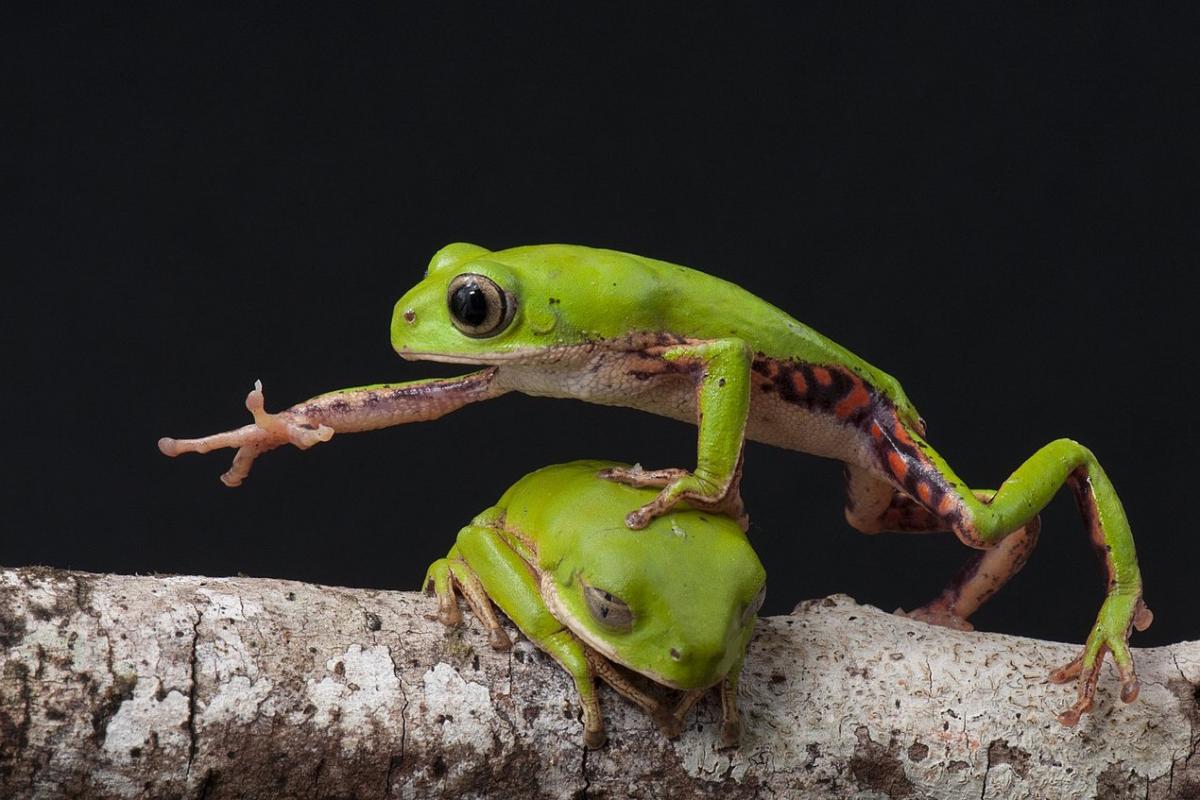D: Frogs and toads are the terror of the insect world. A frog waits quietly until an insect wanders by. Then it strikes with its lightning fast sticky tongue. The insect is pulled into the frog’s mouth and swallowed, still whole and alive. Sometimes, when a frog eats a large insect, you can see it squirming in the frog’s belly, desperate to escape. Lack of air, acids, and digestive enzymes seal its inevitable doom.
Y: Actually Don, it isn’t quite inevitable.
D: What do you mean, Yaël?
Y: In 2020 a Japanese biologist reported discovering a species of aquatic beetle that can actively escape alive from the stomach of a pond frog.
D: Does it crawl back up the frog’s gullet and out its mouth?
Y: No, actually, it goes the other way.
D: You’ve got to be kidding.
Y: Ordinarily, a food item takes about twenty-four hours to pass through a frog’s digestive tract and be...um...excreted. The beetle can complete this trip in as little as six minutes. This is evidence that it actively swims or crawls down the frog’s intestinal tract. A speedy escape helps minimize the beetle’s exposure to acids and other extreme conditions in this deadly environment. The beetle’s adaptations for aquatic life involve the ability to trap a pocket of air in its carapace for underwater breathing. This may help it avoid suffocating inside the frog. At the end of its harrowing journey the beetle faces one last obstacle; the muscles of the frog’s anal sphincter. The beetle must actively stimulate the frog’s hindgut, causing it to poop the beetle out.
D: Yaël, whenever I think a situation is hopeless, I’ll remember that beetle.










